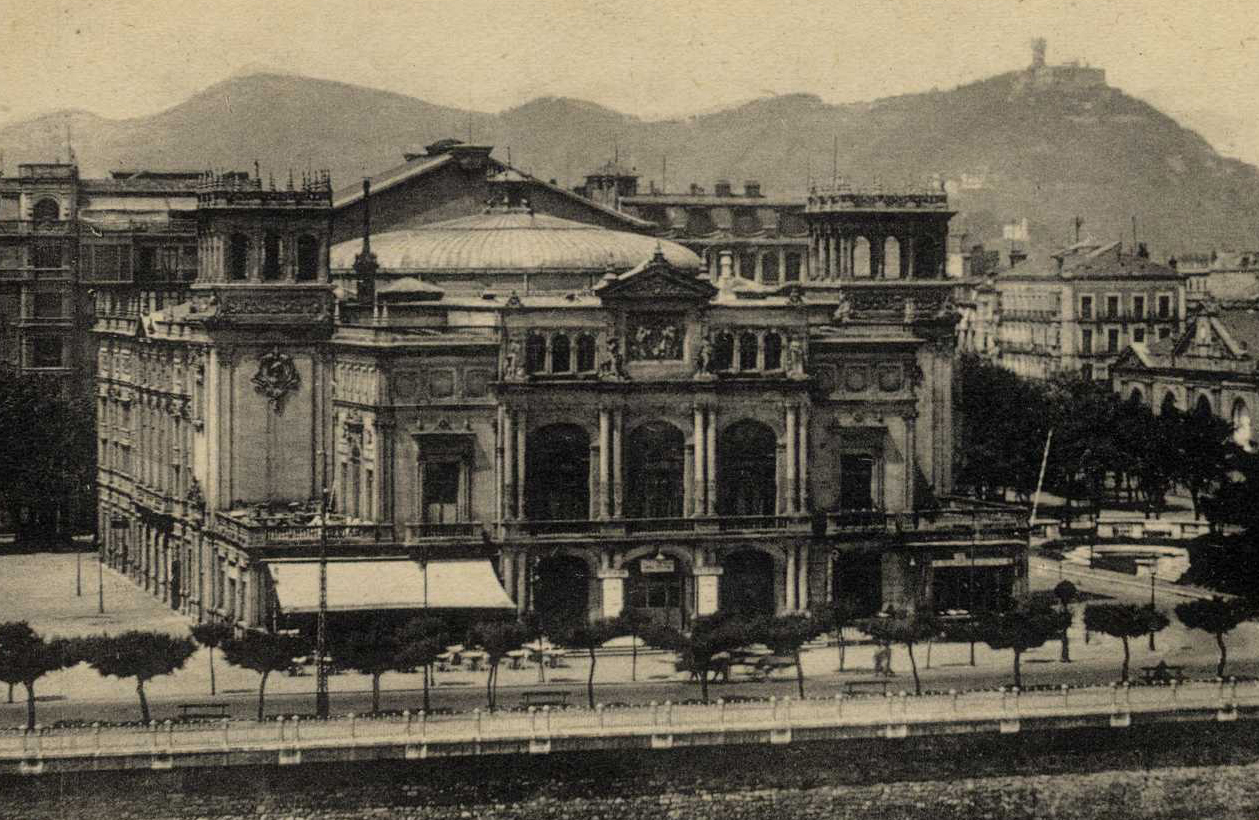Victoria Eugenia Antzokia
+ info
Victoria Eugenia
Year: 1912
Architect: Francisco de Urcola
Capactiy: 900
Stage:12x16x8 m
VictoriaEugenia Theatre is a theater located in the city of San Sebastian. Designed by the architect Francisco de Urcola, was opened in 1912. It has beenthe scene of important premieres of zarzuela and all editions of the San Sebastián International Film Festival until 1999. Between 2001 and 2007 was conducted the deepest process reform of the theater. Throughout its century of history has been the epicenter of the cultural life of the city.
In the early twentieth century, San Sebastian lived a period of splendor fruit of his growing fame as a spa town and major tourist destination of the bourgeoisie and the Spanish aristocracy and one of the most popular among the European aristocracy. To reaffirm the bourgeois and elegant character of the city, and to encourage their development in that regard, in was created 1902 the Sociedad Anónima de Fomento de San Sebastián, whose main objective was to build a theater and a hotel luxury.
Various locationsfor the construction of both buildings were shuffled. One of the options was assessed against construction of the Bay of La Concha. Finally, they opted for the land occupied by the gardens of Oquendo, who was loaned by the city of San Sebastian on the condition that the theater should become municipal property past 70 years.
In 1909, simultaneously, began to build the Hotel Maria Cristina and Victoria Eugenia Theatre. The hotel was designed by the French architect Charles Mewes, author also of several Ritz hotels in various European cities, including the Ritz in Madrid, and the direction of the project fell into the hands of Francis Urcola, architect, in turn, the Theatre Victoria Eugenia. Urcola took into account the experience of the last theaters built in Vienna and Paris. In 1912 both buildings were finally opened. The theater would become a major catalyst of artistic creation of the city and would bring San Sebastián within the circuit of the largest theaters in the country.
TheVictoria Eugenia Theatre, built in neo-Renaissance and neoplateresco Spanish style and has the main entrance on the Paseo de la República Argentina, and occupies a total area of 2,400 m². In the main entrance there are busts, representing the Count of Peñaflorida, Arriaga, Eslava, Gayarre Gaztambide and Santesteban. Building facades are made of sandstone, typical of the buildings in the early twentieth century in San Sebastian.
The main hall is covered by an ornate vault frescoed by Ignacio Ugarte, of custom themes. The capacity of the theater before the renovation culminated in 2007 was about 1250 locations. After these works, the capacity was reduced to 900 due to the installation of wider seats and eliminating those with poor visibility.
The locations of the main room are distributed among the stalls, the main floor, reserved for the boxes (which is accessed via the stairs located at the entrance of the theater), stalls and amphitheater.
Withthe developed works between 2001 and 2007, funded equally by the City Council of San Sebastián and the Ministry of Culture, the theater, in addition to changes already mentioned as the number of locations is concerned, suffered a major remodeling process and development of new spaces. Two new rooms were created. The first is the 'Club Room' created under the stalls due to considerable depth wasted enclosing the old courtyard. The second is a ballet dance room and on the roof of the building. With the work has expanded the stage space has been completely renovated scenic system, incorporating the latest technologies as far as projection and sound techniques are concerned, and have opened up new possibilities, as conversion patio of seats on a smooth surface that allows the use of theater as a dinner theater. The moat has been renovated, becoming its most practical and comfortable use even smaller. Other innovations include the addition of elevators and improve accessibility.
On stageare the offices of the San Sebastian Jazz Festival, Musical Fortnight of San Sebastián International Film Festival.
International Observatory of Theatres & liquidMaps loves:
